Designing a Better Patient Experience: Tips for Developing UX Design for Healthcare Apps
Healthcare apps, fueled by tech advancements, are reshaping the industry by enabling easy patient-healthcare provider interaction. They help overcome traditional, allowing individuals to manage health records, appointments, medications, vital stats, get personalized health advice, and consult with professionals remotely.
Such apps are key tools enhancing service delivery efficiency and patient outcomes.
Table of Contents
- Overview of Healthcare Apps
- Importance of user experience (UX) design in healthcare apps
- 5 Main Challenges When Building UX Design For Healthcare Apps
- 9 Main Principles To Follow When Building UX Design In Healthcare
- Building A Healthcare App’s UX In 6 Steps
- Case Studies: Real-Life Examples of UX Design Excellence in Healthcare Apps
- Conclusion
- FAQs
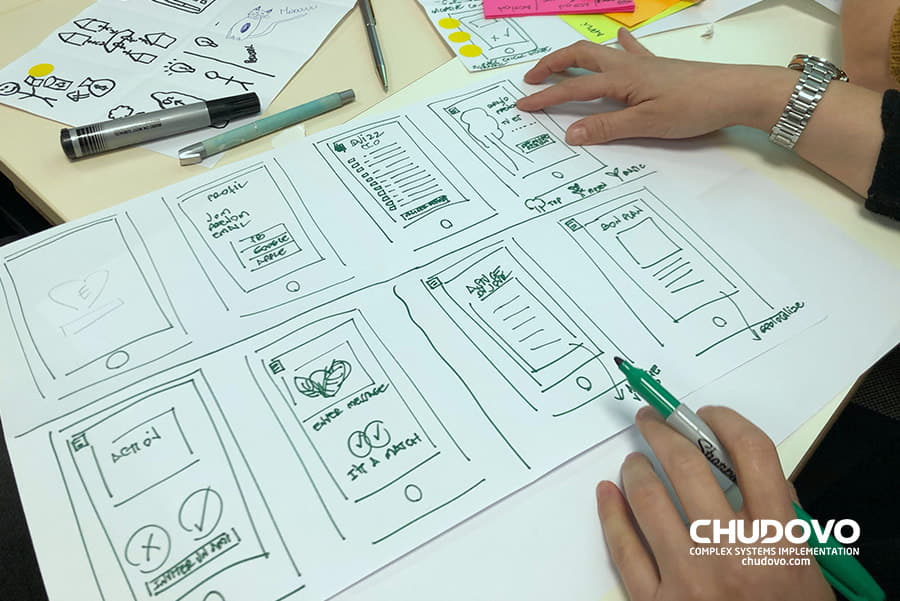
Overview of Healthcare Apps
In the dynamic healthcare landscape, where technological advancements are rapidly reshaping the industry, healthcare apps have emerged as game-changers, revolutionizing how patients interact with healthcare providers. These digital marvels have transcended the traditional barriers of time and distance, empowering individuals to take charge of their health and well-being like never before.
With healthcare apps, individuals can now seamlessly access medical information, manage their health records, schedule appointments, track medications, monitor vital signs, receive personalized health recommendations, and even connect with healthcare professionals remotely. These apps have become an indispensable tool for patients and have transformed how healthcare services are delivered, optimizing efficiency and improving patient outcomes.
The potential of healthcare apps is far-reaching, touching every aspect of the healthcare ecosystem. These apps have become catalysts for positive change, promoting preventive care and early intervention, enhancing patient engagement and empowering self-care. They bridge the gap between patients and healthcare providers, fostering a collaborative approach to healthcare that transcends geographical limitations and enhances the overall patient experience. However, in this article, we will explore the importance of UX design in healthcare apps, highlight the challenges when building UX design for healthcare apps, discuss 6 steps to building a healthcare app, and provide valuable tips for creating a seamless and user-friendly experience.
As we delve deeper into healthcare apps and their impact on the industry, it becomes evident that these digital tools have become the cornerstone of patient-centric care. By empowering individuals with information, support, and personalized interventions, healthcare apps have ushered in a new era of proactive healthcare management and transformed the patient experience as we know it.
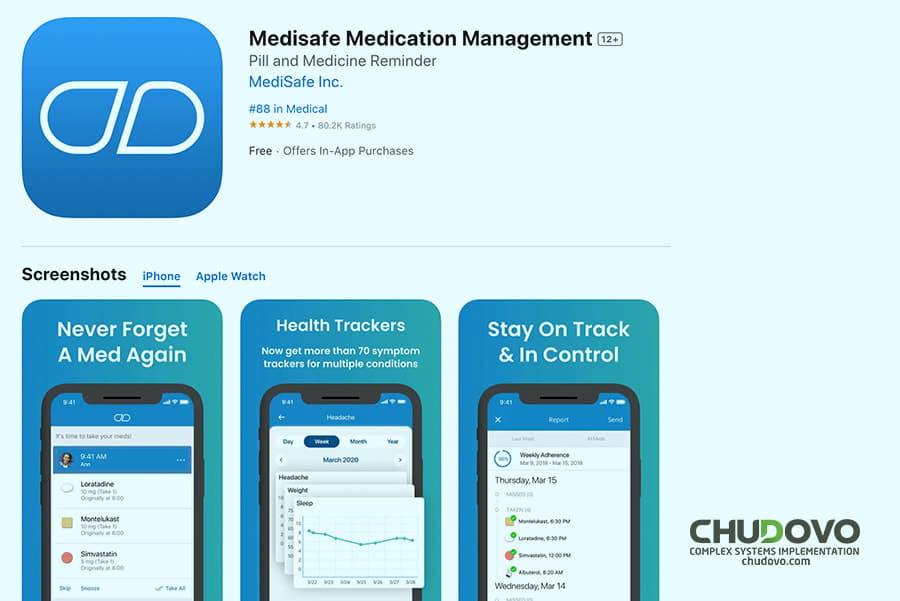
Importance of user experience (UX) design in healthcare apps
User experience design is vital in healthcare apps as it focuses on creating intuitive, user-friendly interfaces that enhance engagement, satisfaction, and overall patient experience. Here are 5 importance of UX you might want to look at:
- Amplifying User Engagement: Through thoughtful UX design, healthcare apps can captivate users, keeping them actively involved in managing their health. Engaging interfaces, intuitive navigation, and personalized experiences foster a sense of empowerment and encourage sustained usage.
- Improving Treatment Adherence: UX design is pivotal in enhancing treatment adherence, a critical factor in improving health outcomes. By creating user-friendly interfaces, integrating medication reminders, and simplifying complex medical information, healthcare apps can effectively support patients in following their prescribed treatment plans.
- Enabling Seamless Navigation: The intricate web of healthcare processes can often overwhelm patients. UX design simplifies this journey, guiding users seamlessly through the app’s features, reducing friction, and ensuring that accessing healthcare services and information is a smooth and intuitive experience.
- Enhancing Patient Satisfaction: Positive patient experiences build trust and satisfaction. Well-designed UX in healthcare apps prioritizes clear communication, easy access to support resources, and a compassionate approach instilling a sense of comfort and increasing patient satisfaction and loyalty.
- Driving Behavior Change: Healthcare apps can potentially cause positive behaviour change by leveraging persuasive design techniques. By implementing motivational features, gamification elements, and personalized feedback, UX design can inspire users to adopt healthier lifestyles and actively engage in their self-care journey.
The importance of UX design in healthcare apps cannot be overstated. By placing users at the centre of the design process and creating seamless, engaging, and personalized experiences, these apps can transform healthcare delivery, empower patients, and ultimately improve health outcomes on a global scale.
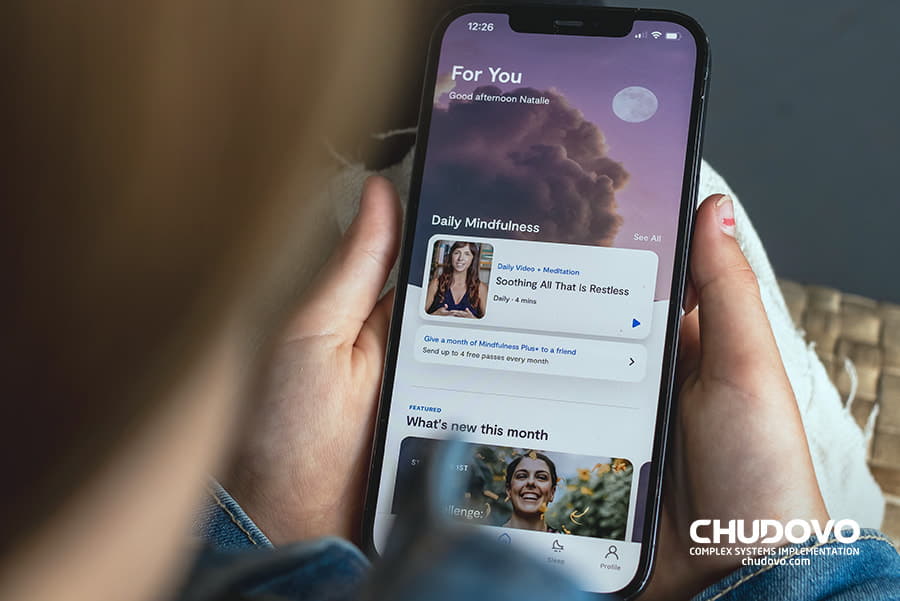
5 Main Challenges When Building UX Design For Healthcare Apps
Creating a remarkable user experience (UX) design for healthcare apps has its hurdles. The healthcare landscape presents unique complexities that demand innovative solutions. Here are the five main challenges that developers face when building UX design for healthcare apps and strategies to overcome them:
- Balancing Complexity and Simplicity: Healthcare is a multifaceted domain with intricate processes, vast amounts of data, and diverse user needs. Designing a UX that balances the necessary complexity while maintaining simplicity is crucial. Developers must carefully prioritize features, streamline workflows, and provide contextual guidance to ensure users can easily navigate and understand the app’s functionality.
- Ensuring Regulatory Compliance: Healthcare apps operate within a highly regulated environment to safeguard patient privacy and data security. Developers must navigate the complex compliance landscape, such as HIPAA (Health Insurance Portability and Accountability Act) in the United States or GDPR (General Data Protection Regulation) in the European Union. By implementing robust privacy measures, encryption protocols, and stringent access controls, developers can build trust with users and adhere to regulatory requirements.
- Bridging the Digital Divide: While the digital revolution is transforming healthcare, it’s essential to consider diverse user populations, including older adults, individuals with disabilities, and those with limited access to technology. UX design should prioritize accessibility by incorporating features such as adjustable font sizes, voice assistance, and intuitive interfaces that accommodate various abilities and technological literacy levels.
- Integrating with Legacy Systems: The healthcare industry relies on a myriad of legacy systems and interoperability challenges. Healthcare apps must seamlessly integrate with existing electronic health records (EHRs), appointment scheduling systems, and other healthcare infrastructure. Developers must ensure smooth data exchange, facilitate interoperability standards like HL7 (Health Level Seven), and work closely with healthcare IT teams to achieve seamless integration.
- Ensuring User Trust: Healthcare apps handle sensitive personal health information, making privacy and security paramount. Users need assurance that their data is protected. Developers should prioritize robust security measures, transparent privacy policies, secure data transmission, and compliance with industry standards. Clear communication and user education on privacy practices will foster trust and encourage users to engage with the app confidently.
Overcoming these challenges requires a deep understanding of the healthcare domain, which the Chudovo team have, collaboration with healthcare professionals, and an iterative design process that involves continuous user feedback and testing. By addressing complexity, compliance, accessibility, interoperability, and trust, developers can navigate these challenges and create exceptional UX designs for healthcare apps that truly make a difference in patient care.

9 Main Principles To Follow When Building UX Design In Healthcare
When designing UX for healthcare apps, following guiding principles is crucial to ensure a seamless and meaningful user experience. By incorporating these nine critical principles into the design process, developers can create healthcare apps that truly empower patients, enhance engagement, and deliver tangible value. Let’s explore these principles in detail:
- User-centred design approach: Placing the user at the forefront of the design process is essential. Conduct thorough user research, gather feedback, and involve end-users in every stage of development to gain insights into their needs, preferences, and pain points. By empathizing with users and understanding their goals, motivations, and challenges, developers can create a user-centred experience that resonates with their target audience.
- Designing for accessibility and inclusivity: Healthcare apps should be accessible to users of all abilities. Consider diverse user populations, including individuals with disabilities or limited technological proficiency. Incorporate adjustable font sizes, voice assistance, colour contrast options, and intuitive navigation to ensure every user can engage with the app effectively and independently.
- Ensuring ease of use and intuitive navigation: Healthcare apps should provide a seamless and intuitive user interface (UI) that allows users to accomplish tasks effortlessly. Employ clear information hierarchy, consistent design patterns, and intuitive navigation menus to guide users through the app’s features. Minimize cognitive load and eliminate unnecessary steps to streamline user interactions.
- Incorporating relevant healthcare information and features: Delivering accurate and relevant healthcare information within the app is crucial for empowering users to make informed decisions about their health. Provide clear and concise content, offer personalized recommendations, and integrate reliable health resources. Tailor the app’s features to address specific healthcare needs, such as medication reminders, symptom trackers, or appointment scheduling.
- Maintaining privacy and security: Privacy and security are paramount in healthcare apps. Establish stringent data protection measures, comply with regulatory requirements, and communicate transparent privacy policies to build user trust. Implement encryption protocols, secure authentication mechanisms, and data anonymization techniques to safeguard sensitive health information.
- Applying evidence-based design principles: Base design decisions on evidence-based practices and research findings. Leverage existing knowledge about user behaviour, human-computer interaction, and cognitive psychology to inform the design process. Conduct usability testing and iterate based on user feedback to continuously refine the app’s UX.
- Utilizing effective data visualization techniques: Healthcare apps often deal with complex medical data. Utilize data visualization techniques such as graphs, charts, and infographics to present information in a visually appealing and easily understandable format. Thoughtful data visualization enhances user comprehension, facilitates decision-making, and enables users to track their health progress.
- Designing for emotional well-being and empathy: Recognize that healthcare is profoundly personal and dynamic. Infuse the app with empathy, compassion, and emotional support. Implement features that address emotional well-being, such as motivational messages, positive reinforcement, or support communities, to create a caring and supportive environment.
- Promoting seamless integration with existing healthcare systems: Healthcare apps should seamlessly integrate with existing healthcare systems, such as EHRs, appointment scheduling platforms, or telehealth services. Collaborate with healthcare IT professionals to ensure smooth data exchange and interoperability. Integration reduces fragmentation and improves the continuity of care for users.
By following these principles, developers can create healthcare apps that meet users’ needs and deliver a transformative user experience. Emphasizing user-centricity, accessibility, ease of use, relevant content, privacy, evidence-based design, effective data visualization, emotional well-being, and integration, developers can design healthcare apps that empower users, foster engagement, and contribute to improved health outcomes.
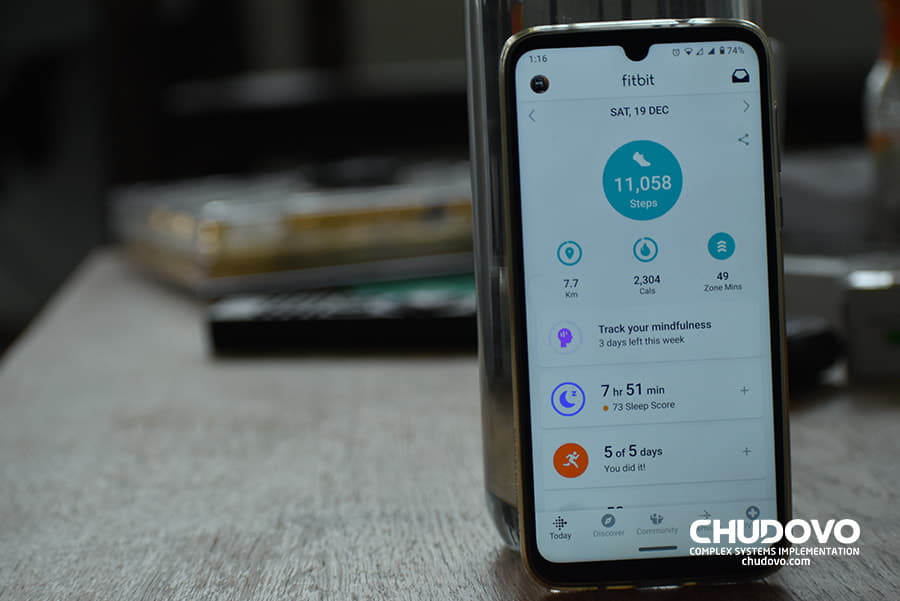
Building A Healthcare App’s UX In 6 Steps
Crafting an exceptional user experience (UX) for healthcare apps requires a systematic and thoughtful approach. By following these six steps, developers can create a user-centric healthcare app that resonates with users, promotes engagement, and delivers a seamless and impactful experience. Let’s delve into each step in detail:
- Step 1 – Gather Info
Conduct comprehensive research to understand the target audience, their healthcare needs, and their expectations from the app. Dive into user demographics, behaviours, and preferences through surveys, interviews, and user analytics. Gain insights into their pain points, motivations, and desired features to inform the design process effectively.
- Step 2 – Find Your Target Audience (TA)
Define your target audience based on the gathered information. Identify specific user segments within the healthcare domain, such as patients, caregivers, or healthcare professionals. Tailor the app’s features, content, and design elements to address their unique needs and create personalized experiences that resonate with them.
- Step 3 – Talk To Domain Experts
Engage healthcare professionals, such as doctors, nurses, or healthcare administrators, who possess valuable domain expertise. Collaborate with them to understand clinical workflows, regulatory considerations, and best practices. Their insights will help shape the app’s functionality, content, and overall user experience.
- Step 4 – Outline The List Of Features
Based on the research and input from domain experts, create a comprehensive list of features that align with the identified target audience’s needs and goals. Prioritize essential functionalities that address pain points, promote engagement, and deliver value. Consider features such as appointment scheduling, medication management, health tracking, educational resources, and communication channels.
- Step 5 – Make A Prototype
Develop a prototype to visualize the app’s structure, layout, and user flow. Use wireframing tools or interactive prototyping software to visually represent the app’s interface and functionality. Seek feedback from users, domain experts, and stakeholders to refine the prototype iteratively. This step allows for the early identification of usability issues and ensures that the app aligns with user expectations.
- Step 6 – Create A UI Concept
Design the app’s user interface (UI) concept once the prototype is validated. Consider the visual aesthetics, colour schemes, typography, and graphical elements that align with the app’s branding and target audience. Strive for a visually appealing and cohesive UI that enhances user engagement and supports intuitive navigation. Conduct usability testing to validate the UI concept and make necessary refinements.
By following these six steps, developers can build a healthcare app’s UX that is user-centric, addresses specific healthcare needs, and fosters engagement. This holistic approach, rooted in thorough research, collaboration with domain experts, and iterative design, ensures the creation of a healthcare app that delivers value, empowers users, and enhances the overall patient experience.
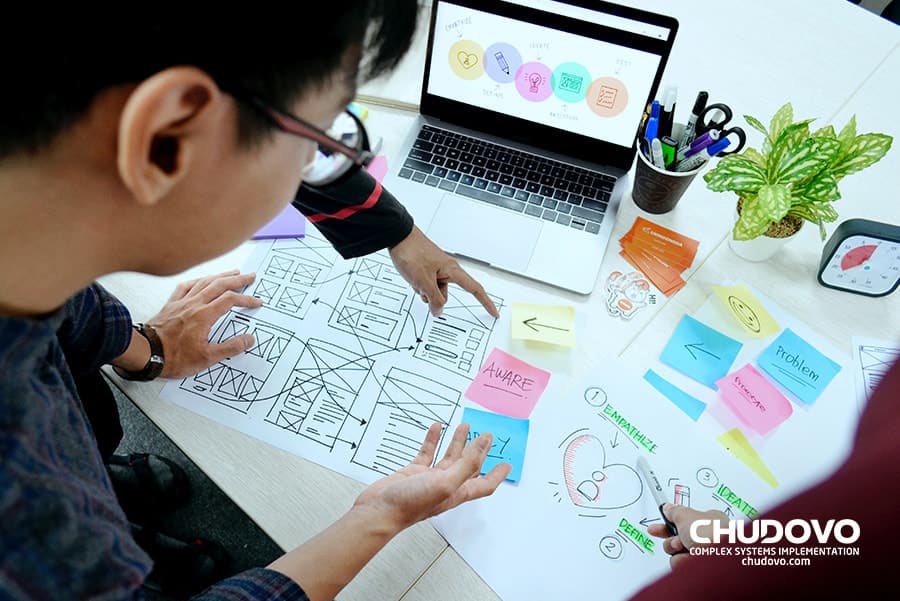
Case Studies: Real-Life Examples of UX Design Excellence in Healthcare Apps
This section will delve into three real-life case studies of healthcare apps that have embraced stunning and mind-blowing UX design, setting new user experience standards and transforming how patients engage with healthcare services.
Case Study 1: Mediscape – Empowering Healthcare Professionals with Comprehensive Resources
Medscape is a renowned healthcare app designed specifically for healthcare professionals, including doctors, nurses, and medical students. It stands out for its exceptional UX design, seamlessly integrating comprehensive medical information and resources into a user-friendly interface.
The app provides an intuitive search feature, enabling healthcare professionals to easily access a vast library of medical articles, research papers, drug information, and clinical guidelines. The well-organized content and interactive tools, such as drug interaction checkers and medical calculators, empower healthcare professionals to make informed decisions quickly and efficiently.
With a visually appealing interface, personalized user profiles, and the ability to customize content preferences, Mediscape has successfully enhanced the user experience for healthcare professionals. It has become an indispensable tool, offering a wealth of knowledge at their fingertips and revolutionizing how medical information is accessed and utilized in the healthcare industry.
Case Study 2: MyFitnessPal – Engaging Users in Personalized Health and Fitness Tracking
MyFitnessPal is a popular and highly successful healthcare app that promotes personal health and fitness goals through its exceptional UX design. The app combines a visually captivating interface with seamless integration of health-tracking features to engage users in their wellness journey.
The app allows users to track their nutrition, exercise, and overall physical activity effortlessly. Its intuitive design and database of millions of food items enable users to easily log their meals, track calorie intake, and monitor macronutrient consumption. The app’s integration with fitness wearables and activity trackers automates data synchronization, providing users with real-time insights into their progress.
With personalized goal setting, progress tracking, and motivational features such as achievement badges and social community support, MyFitnessPal has revolutionized how users approach their health and fitness. The app’s stunning UX design has played a pivotal role in creating an engaging and user-centric platform that inspires individuals to lead healthier lifestyles.
Case Study 3: Headspace – Cultivating Mindfulness and Emotional Well-being
Headspace is a mindfulness and meditation app that exemplifies outstanding UX design in mental health and well-being. The app’s serene and visually captivating interface sets the tone for a calming and immersive experience.
Headspace offers many meditation programs, sleep aids, and mindfulness exercises to alleviate stress, promote relaxation, and enhance emotional well-being. The app’s intuitive navigation and personalized recommendations based on user preferences make it easy for individuals to incorporate mindfulness practices into their daily lives.
With delightful animations, soothing audio content, and an interactive progress tracker, Headspace creates an immersive and engaging user experience. The app’s stunning UX design has garnered widespread acclaim, making it a go-to resource for individuals seeking to prioritize their mental health and cultivate mindfulness in today’s fast-paced world.
These real-life case studies highlight the transformative power of UX design in healthcare apps. Medscape empowers healthcare professionals with comprehensive resources, MyFitnessPal engages users in personalized health and fitness tracking, and Headspace fosters mindfulness and emotional well-being. These examples inspire developers and designers seeking to create healthcare apps that captivate users, enhance engagement, and positively impact their well-being.

Certified engineers
Convenient rates
Fast start
Profitable conditions
Agreement with
EU company
English and German
speaking engineers
Conclusion
In conclusion, the field of healthcare apps presents a remarkable opportunity to revolutionize the patient experience and empower individuals to take control of their health and well-being. Through user experience (UX) design, we have explored the essential elements and strategies for developing exceptional healthcare apps that prioritize user-centricity, accessibility, and seamless integration with existing healthcare systems.
Throughout this article, we have examined the main challenges faced in building UX design for healthcare apps, emphasizing the need for thorough research, collaboration with domain experts, and a holistic approach to development. Also, the six-step process detailed in this article provides a roadmap for building a healthcare app’s UX design, ensuring that each stage is approached with diligence and user-centricity. From gathering information and understanding the target audience to create prototypes and finalizing the user interface concept, each step contributes to crafting an exceptional user experience.
Moreover, the case studies shared have showcased real-life examples of healthcare apps that have successfully harnessed the power of UX design.
To draw the curtain, designing a better patient experience in healthcare apps requires a dedication to UX design principles, a deep understanding of user needs, and a commitment to continuous improvement.
Remember, the future of healthcare is not just in the hands of doctors and providers but also in the intuitive and impactful design of the apps that shape our digital healthcare landscape. Together, let us build a future where healthcare apps serve as trusted companions on the path to better health and well-being.
FAQs
What role does UX design play in healthcare apps?
UX design is crucial in healthcare apps as it ensures a seamless and user-friendly experience, improving engagement, trust, and overall patient outcomes.
What are some effective data visualization techniques for healthcare apps?
Effective data visualization techniques in healthcare apps include using graphs, charts, and infographics to present complex medical data in a visually appealing and easily understandable manner. These techniques simplify data interpretation and aid users in making informed decisions about their health.
How can healthcare apps be designed to enhance patient engagement?
Healthcare apps can enhance patient engagement by incorporating personalized health goals, interactive progress tracking, achievement rewards, and gamification elements. These design elements encourage users to participate in their health journey and increase engagement actively.
How can I ensure seamless integration with existing healthcare systems?
Collaborate with healthcare professionals and IT experts to design an app that seamlessly integrates with electronic health records, appointment scheduling systems, and other healthcare infrastructure.
Entrust your UX design for healthcare applications to the Chudovo team today. Let’s discuss it!




